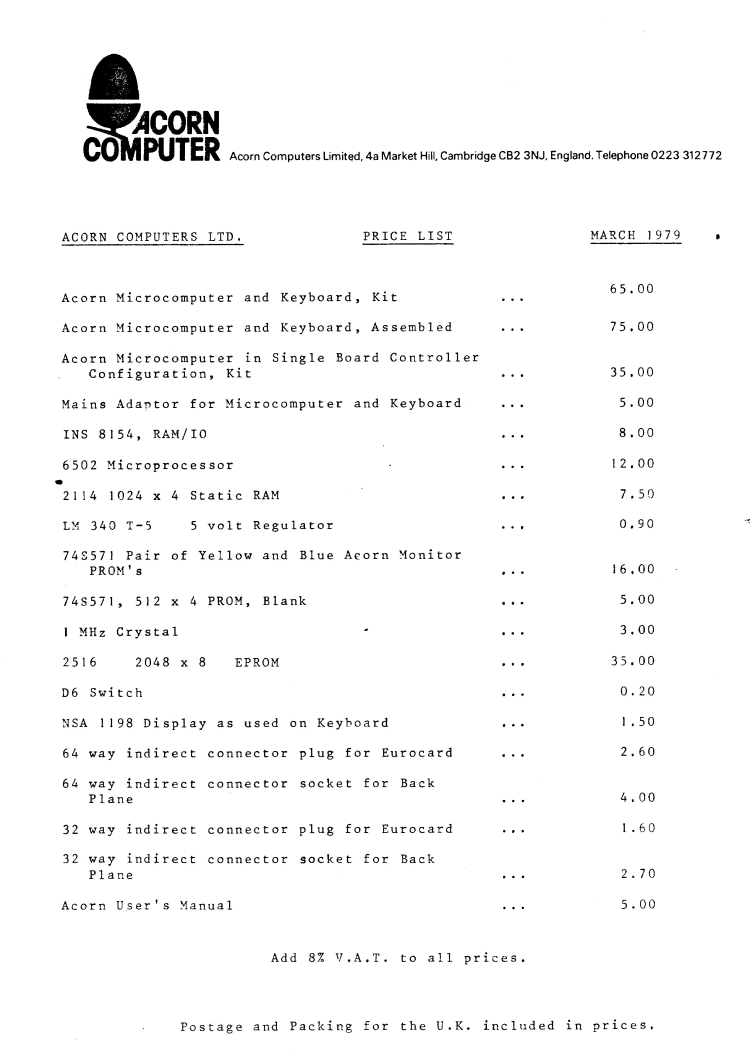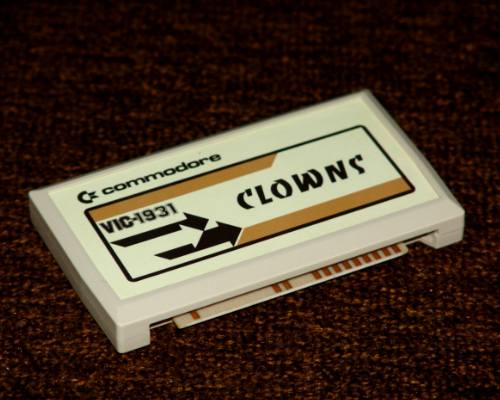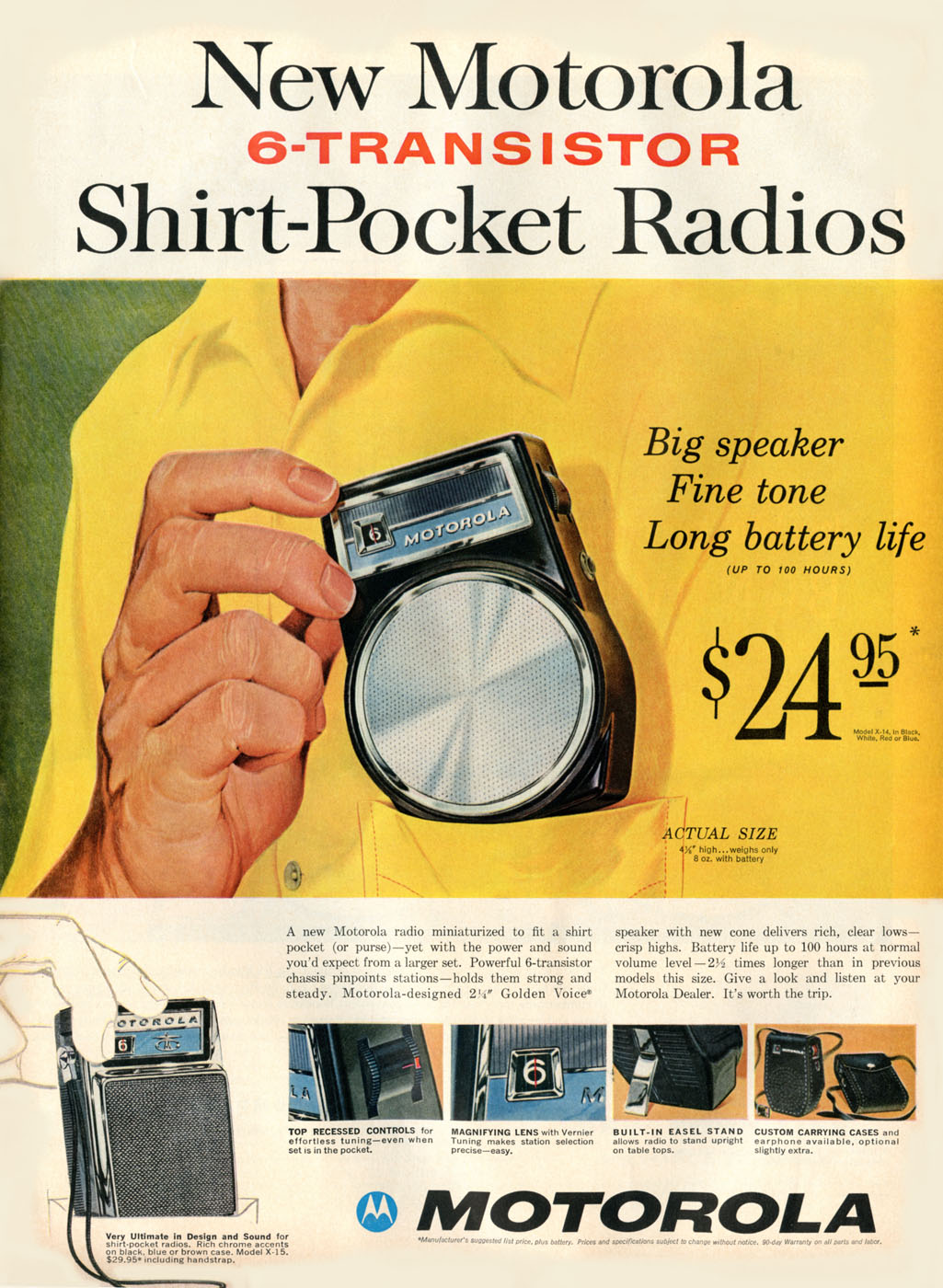|
Chuck Peddle
Charles Ingerham Peddle (November 25, 1937 – December 15, 2019) was an American electrical engineer best known as the main designer of the MOS Technology 6502 microprocessor, the single-board computer, and its successor, the Commodore PET personal computer, both based on the 6502. Biography Peddle was born in Bangor, Maine, United States on November 25, 1937. He worked in a radio station while in high school. In 1955, Peddle joined the United States Marine Corps. He attended the University of Maine where he earned a Bachelor of Science (B.Sc.) degree in engineering physics. Afterward, he went to work for General Electric working with time-sharing systems. In 1973, Peddle worked at Motorola on developing the 6800 processor. Peddle recognized a market for a very low price microprocessor and began to champion such a design to complement the $300 Motorola 6800. His efforts were frustrated by Motorola management and he was told to drop the project. He then left for MOS Technolo ... [...More Info...] [...Related Items...] OR: [Wikipedia] [Google] [Baidu] |
Bangor, Maine
Bangor ( ) is a city in the U.S. state of Maine and the county seat of Penobscot County. The city proper has a population of 31,753, making it the state's 3rd-largest settlement, behind Portland (68,408) and Lewiston (37,121). Modern Bangor was established in the mid-19th century with the lumber and shipbuilding industries. Lying on the Penobscot River, logs could be floated downstream from the Maine North Woods and processed at the city's water-powered sawmills, then shipped from Bangor's port to the Atlantic Ocean downstream, and from there to any port in the world. Evidence of this is still visible in the lumber barons' elaborate Greek Revival and Victorian mansions and the 31-foot-high (9.4 m) statue of Paul Bunyan. Today, Bangor's economy is based on services and retail, healthcare, and education. Bangor has a port of entry at Bangor International Airport, also home to the Bangor Air National Guard Base. Historically Bangor was an important stopover on the Great ... [...More Info...] [...Related Items...] OR: [Wikipedia] [Google] [Baidu] |
Engineering Physics
Engineering physics, or engineering science, refers to the study of the combined disciplines of physics, mathematics, chemistry, biology, and engineering, particularly computer, nuclear, electrical, electronic, aerospace, materials or mechanical engineering. By focusing on the scientific method as a rigorous basis, it seeks ways to apply, design, and develop new solutions in engineering. Overview Unlike traditional engineering disciplines, engineering science/physics is not necessarily confined to a particular branch of science, engineering or physics. Instead, engineering science/physics is meant to provide a more thorough grounding in applied physics for a selected specialty such as optics, quantum physics, materials science, applied mechanics, electronics, nanotechnology, microfabrication, microelectronics, computing, photonics, mechanical engineering, electrical engineering, nuclear engineering, biophysics, control theory, aerodynamics, energy, solid-state physics, etc. It is ... [...More Info...] [...Related Items...] OR: [Wikipedia] [Google] [Baidu] |
Acorn Computers
Acorn Computers Ltd. was a British computer company established in Cambridge, England, in 1978. The company produced a number of computers which were especially popular in the United Kingdom, UK, including the Acorn Electron and the Acorn Archimedes. Acorn's computer dominated the UK educational computer market during the 1980s. Though the company was acquired and largely dismantled in early 1999, with various activities being dispersed amongst new and established companies, its legacy includes the development of reduced instruction set computing (RISC) personal computers. One of its operating systems, , continues to be developed by RISC OS Open. Some activities established by Acorn lived on: technology developed by Arm (company), Arm, created by Acorn as a joint venture with Apple, Inc., Apple and VLSI Technology, VLSI in 1990, is dominant in the mobile phone and personal digital assistant (PDA) microprocessor market. Acorn is sometimes referred to as the "British Apple" and ... [...More Info...] [...Related Items...] OR: [Wikipedia] [Google] [Baidu] |
BBC Micro
The British Broadcasting Corporation Microcomputer System, or BBC Micro, is a series of microcomputers and associated peripherals designed and built by Acorn Computers in the 1980s for the BBC Computer Literacy Project. Designed with an emphasis on education, it was notable for its ruggedness, expandability, and the quality of its operating system. An accompanying 1982 television series, '' The Computer Programme'', featuring Chris Serle learning to use the machine, was broadcast on BBC2. After the Literacy Project's call for bids for a computer to accompany the TV programmes and literature, Acorn won the contract with the ''Proton'', a successor of its Atom computer prototyped at short notice. Renamed the BBC Micro, the system was adopted by most schools in the United Kingdom, changing Acorn's fortunes. It was also successful as a home computer in the UK, despite its high cost. Acorn later employed the machine to simulate and develop the ARM architecture. While nine mo ... [...More Info...] [...Related Items...] OR: [Wikipedia] [Google] [Baidu] |
Oric
Oric was the name used by UK-based Tangerine Computer Systems for a series of 6502-based home computers sold in the 1980s, primarily in Europe. With the success of the ZX Spectrum from Sinclair Research, Tangerine's backers suggested a home computer and Tangerine formed Oric Products International Ltd to develop the Oric-1. The computer was introduced in 1982. During 1983, approximately 160,000 Oric-1 computers were sold in the UK, plus another 50,000 in France (where it was the year's top-selling machine). This resulted in Oric being acquired and given funding for a successor model, the 1984 Oric Atmos. Oric was bought by Eureka, which produced the less successful Oric Telestrat (1986). Oric was dissolved the year the Telestrat was released. Eastern European clones of Oric machines were produced into the 1990s. Models Oric-1 Based on a 1 MHz MOS Technology 6502 CPU, the Oric-1 came in 16 KB or 48 KB RAM variants for £129 and £169 respectively, m ... [...More Info...] [...Related Items...] OR: [Wikipedia] [Google] [Baidu] |
Atari 8-bit Family
The Atari 8-bit family is a series of 8-bit home computers introduced by Atari, Inc. in 1979 as the Atari 400 and Atari 800. The series was successively upgraded to Atari 1200XL , Atari 600XL, Atari 800XL, Atari 65XE, Atari 130XE, Atari 800XE, and Atari XEGS, the last discontinued in 1992. They differ primarily in packaging, each based on the MOS Technology 6502 CPU A central processing unit (CPU), also called a central processor, main processor or just processor, is the electronic circuitry that executes instructions comprising a computer program. The CPU performs basic arithmetic, logic, controlling, and ... at and the same custom coprocessor chips. As the first home computer architecture with coprocessors, it has graphics and sound more advanced than most contemporary machines. Video games were a major draw, and first-person space combat simulator ''Star Raiders'' is considered the platform's killer app. The plug-and-play peripherals use the Atari SIO serial bus, wit ... [...More Info...] [...Related Items...] OR: [Wikipedia] [Google] [Baidu] |
VIC-20
The VIC-20 (known as the VC-20 in Germany and the VIC-1001 in Japan) is an 8-bit home computer that was sold by Commodore Business Machines. The VIC-20 was announced in 1980, roughly three years after Commodore's first personal computer, the PET. The VIC-20 was the first computer of any description to sell one million units. It was described as "one of the first anti-spectatorial, non-esoteric computers by design...no longer relegated to hobbyist/enthusiasts or those with money, the computer Commodore developed was the computer of the future." The VIC-20 was called ''VC-20'' in Germany because the pronunciation of ''VIC'' with a German accent sounds like the German expletives "fick" or "wichsen". The term ''VC'' was marketed as though it were an abbreviation of ''VolksComputer'' ("people's computer," similar to Volkswagen and Volksempfänger). History Origin and marketing The VIC-20 was intended to be more economical than the PET computer. It was equipped with 5 KB o ... [...More Info...] [...Related Items...] OR: [Wikipedia] [Google] [Baidu] |
Apple II
The Apple II (stylized as ) is an 8-bit home computer and one of the world's first highly successful mass-produced microcomputer products. It was designed primarily by Steve Wozniak; Jerry Manock developed the design of Apple II's foam-molded plastic case, Rod Holt developed the switching power supply, while Steve Jobs's role in the design of the computer was limited to overseeing Jerry Manock's work on the plastic case. It was introduced by Jobs and Wozniak at the 1977 West Coast Computer Faire, and marks Apple's first launch of a personal computer aimed at a consumer market—branded toward American households rather than businessmen or computer hobbyists. ''Byte'' magazine referred to the Apple II, Commodore PET 2001, and TRS-80 as the "1977 Trinity". As the Apple II had the defining feature of being able to display color graphics, the Apple logo was redesigned to have a spectrum of colors. The Apple II is the first model in the Apple II series, followed by App ... [...More Info...] [...Related Items...] OR: [Wikipedia] [Google] [Baidu] |
Intel 8080
The Intel 8080 (''"eighty-eighty"'') is the second 8-bit microprocessor designed and manufactured by Intel. It first appeared in April 1974 and is an extended and enhanced variant of the earlier 8008 design, although without binary compatibility.'' Electronic News'' was a weekly trade newspaper. The same advertisement appeared in the May 2, 1974 issue of ''Electronics'' magazine. The initial specified clock rate or frequency limit was 2 MHz, with common instructions using 4, 5, 7, 10, or 11 cycles. As a result, the processor is able to execute several hundred thousand instructions per second. Two faster variants, the 8080A-1 (sometimes referred to as the 8080B) and 8080A-2, became available later with clock frequency limits of 3.125 MHz and 2.63 MHz respectively. The 8080 needs two support chips to function in most applications: the i8224 clock generator/driver and the i8228 bus controller. It is implemented in N-type metal-oxide-semiconductor logic (NMOS ... [...More Info...] [...Related Items...] OR: [Wikipedia] [Google] [Baidu] |
MOS Technology 65xx
The MOS Technology 65xx series is a family of 8-bit microprocessors from MOS Technology, based on the Motorola 6800 (introduced ca. 1975). The 65xx family included the 6502, used in home computers such as the Commodore PET and VIC-20, the Apple II, the Atari 800, and the British BBC Micro. The 6501 and 6502 have 40-pin DIP packages; the 6503, 6504, 6505, and 6507 are 28-pin DIP versions, for reduced chip and circuit board cost. In all of the 28-pin versions, the pin count is reduced by leaving off some of the high-order address pins and various combinations of function pins, making those functions unavailable. Typically, the 12 pins omitted are the three not connected (NC) pins, one of the two Vss pins, one of the clock pins, the SYNC pin, the set overflow (SO) pin, either the maskable interrupt or the non-maskable interrupt (NMI), and the four most-significant address lines (A12–A15) are the 12 pins omitted to reduce the pin count from 40 to 28. The omission of four addre ... [...More Info...] [...Related Items...] OR: [Wikipedia] [Google] [Baidu] |
MOS Technology
MOS Technology, Inc. ("MOS" being short for Metal Oxide Semiconductor), later known as CSG (Commodore Semiconductor Group) and GMT Microelectronics, was a semiconductor design and fabrication company based in Audubon, Pennsylvania. It is most famous for its 6502 microprocessor and various designs for Commodore International's range of home computers. History Three former General Instrument executives, John Paivinen, Mort Jaffe and Don McLaughlin, formed MOS Technology in Valley Forge, Pennsylvania in 1969. The Allen-Bradley Company was looking to provide a second source for electronic calculators and their chips designed by Texas Instruments (TI). In 1970 Allen-Bradley acquired a majority interest in MOS Technology. In the early 1970s, TI decided to release their own line of calculators, instead of selling just the chips inside them, and introduced them at a price that was lower than the price of the chipset alone. Many early chip companies were reliant on sales of ca ... [...More Info...] [...Related Items...] OR: [Wikipedia] [Google] [Baidu] |
Motorola 6800
The 6800 ("''sixty-eight hundred''") is an 8-bit microprocessor designed and first manufactured by Motorola in 1974. The MC6800 microprocessor was part of the M6800 Microcomputer System (latter dubbed ''68xx'') that also included serial and parallel interface ICs, RAM, ROM and other support chips. A significant design feature was that the M6800 family of ICs required only a single five-volt power supply at a time when most other microprocessors required three voltages. The M6800 Microcomputer System was announced in March 1974 and was in full production by the end of that year. "Motorola's M6800 microcomputer system, which can operate from a single 5-volt supply, is moving out of the sampling stage and into full production." The small-quantity price of the MC6800 is . The MC6820 PIA cost . The 6800 has a 16-bit address bus that can directly access of memory and an 8-bit bi-directional data bus. It has 72 instructions with seven addressing modes for a total of 197 opcodes. The or ... [...More Info...] [...Related Items...] OR: [Wikipedia] [Google] [Baidu] |






